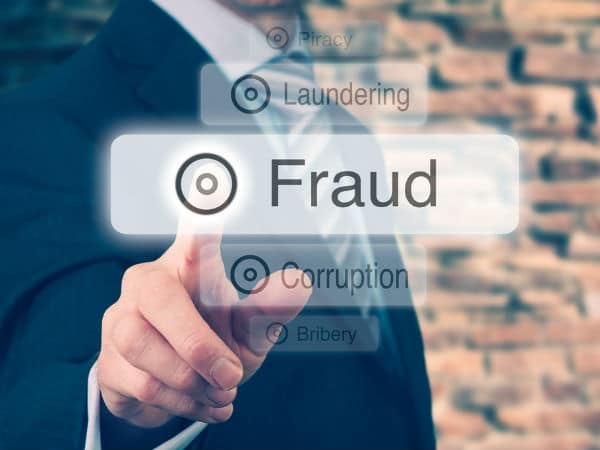Petros Fichidzhyan Pleads Guilty in $17 Million Medicare Hospice Fraud Scheme: A Deep Dive into Identity Theft and Money Laundering
The United States healthcare system, despite its advancements, remains vulnerable to fraudulent activities, particularly within programs like Medicare. These schemes not only drain taxpayer dollars but also undermine the integrity of healthcare services, especially for vulnerable populations like the terminally ill who rely on hospice care. In a significant development highlighting the Justice Department’s commitment to combating such fraud, a California man recently pleaded guilty to a complex scheme that defrauded Medicare of over $17 million. Petros Fichidzhyan, 43, of Granada Hills, orchestrated a multi-faceted operation involving sham hospice companies, aggravated identity theft, and intricate money laundering, demonstrating the lengths to which criminals will go to exploit the healthcare system for personal gain.
This article delves into the details of Fichidzhyan’s elaborate scheme, examining the methods used to defraud Medicare, the individuals impacted, and the broader implications for the healthcare industry. It will also explore the ongoing efforts by law enforcement agencies, such as the Federal Bureau of Investigation (FBI) and the Department of Health and Human Services Office of Inspector General (HHS-OIG), to combat healthcare fraud, particularly in the Los Angeles area, a known hotspot for such criminal activities. By analyzing this case, we aim to shed light on the importance of vigilance, robust regulatory oversight, and inter-agency collaboration in safeguarding the integrity of the healthcare system and protecting vulnerable patients.
The Anatomy of a $17 Million Fraud: How Petros Fichidzhyan Exploited Medicare
Petros Fichidzhyan’s scheme was not a simple case of overbilling or misrepresenting services. It was a meticulously planned operation that involved creating a network of fictitious hospice companies, a practice that is becoming increasingly common in healthcare fraud. These sham entities existed only on paper, designed solely to submit fraudulent claims to Medicare for services that were never rendered.
1. Establishing Sham Hospice Companies:
The foundation of Fichidzhyan’s scheme was the creation of multiple sham hospice companies. This involved a series of deceptive steps:
- Identity Theft of Foreign Nationals: Fichidzhyan and his co-conspirators targeted foreign nationals, stealing their identities to use as the purported owners of these fake hospices. This tactic served a dual purpose: it distanced the real perpetrators from the fraudulent activities and exploited individuals who were less likely to be aware of or able to contest the misuse of their identities.
- Falsifying Official Documents: With the stolen identities in hand, Fichidzhyan and his associates opened bank accounts, signed property leases, and fabricated other necessary documents to give the appearance of legitimate businesses. These actions created a paper trail that, at first glance, could withstand scrutiny from regulatory bodies.
2. Submitting Fraudulent Claims for Non-Existent Services:
The sham hospices were merely a front. The real objective was to submit false claims to Medicare, which they did with alarming success.
- Misappropriation of Doctors’ Identities: Fichidzhyan’s scheme involved another layer of identity theft. He and his co-conspirators misappropriated the identifying information of real doctors, falsely claiming that these physicians had certified patients for hospice care. This added a veneer of legitimacy to their fraudulent claims, making them appear medically justified.
- Fabricating Patient Information: The scheme also involved creating false patient records. Fichidzhyan claimed that these individuals were terminally ill and required hospice services, even though they were not sick and had never requested or received any care from the sham hospices. This was a crucial step in justifying the claims submitted to Medicare.
- Billing for Services Never Rendered: The heart of the fraud was billing Medicare for hospice services that were not medically necessary and, more importantly, were never provided. The sham hospices existed solely to generate false claims, and the patients they purported to serve were entirely fictitious or unwitting victims of identity theft.
3. The Home Health Care Agency Fraud:
In addition to the hospice fraud, Fichidzhyan also engaged in a separate but related scheme involving his home health care agency.
- Fraudulent Use of a Doctor’s Identity: Fichidzhyan wrongfully used a doctor’s name and identifying information to certify Medicare beneficiaries for home health care services, even though the doctor had not authorized these certifications.
- Attempted Cover-Up with Bribes: When the doctor discovered the unauthorized use of his information, Fichidzhyan attempted to cover up his actions by paying the doctor $11,000. This act further highlights the lengths to which he was willing to go to conceal his fraudulent activities.
4. Money Laundering: Concealing the Proceeds of Crime:
The scheme generated nearly $16 million in illicit payments from Medicare, a significant portion of which – almost $7 million – flowed directly to Fichidzhyan. To conceal the origin of these funds and integrate them into the legitimate financial system, Fichidzhyan engaged in sophisticated money laundering.
- Shell Companies and Third-Party Accounts: Fichidzhyan used a network of at least a dozen shell companies and third-party bank accounts to launder the stolen money. These entities were used to move the funds through multiple transactions, obscuring their origin and making it difficult for law enforcement to trace them back to the fraudulent activities.
- Transfers to Personal and Business Accounts: Over $5.3 million was ultimately transferred to Fichidzhyan’s personal and business bank accounts. These funds were likely used for personal expenses, investments, or to further fund the fraudulent operations.
The Legal Consequences: Facing the Music
Fichidzhyan’s elaborate scheme eventually unraveled, leading to his arrest and subsequent guilty plea. He pleaded guilty to health care fraud, aggravated identity theft, and money laundering, facing severe legal repercussions:
- Aggravated Identity Theft: This charge carries a mandatory minimum sentence of two years in prison, reflecting the seriousness with which the law views the theft and misuse of personal information.
- Health Care Fraud: This charge carries a maximum penalty of 10 years in prison.
- Money Laundering: This charge carries the most severe potential penalty, with a maximum of 20 years in prison.
The judge will consider the U.S. Sentencing Guidelines and other factors when determining Fichidzhyan’s final sentence, scheduled for April 14. This sentence will serve as a deterrent to others considering similar fraudulent activities and underscore the commitment of the Justice Department to prosecuting healthcare fraud.
The Broader Context: Hospice Fraud in Los Angeles and Beyond
Fichidzhyan’s case is not an isolated incident. It is part of a larger pattern of hospice fraud that has plagued the Los Angeles area and other parts of the country. The Justice Department has made combating this type of fraud a priority, recognizing its impact on the healthcare system and vulnerable patients.
Recent Convictions and Ongoing Efforts:
- Doctor Convicted in Similar Scheme: In a related case, a doctor was convicted for his role in a scheme to bill Medicare for unnecessary hospice services, highlighting the involvement of medical professionals in such frauds.
- Sentencing of Other Defendants: Two other individuals were sentenced for their participation in a separate hospice fraud scheme, demonstrating the Justice Department’s success in prosecuting these cases.
- The Health Care Fraud Strike Force Program: This program, led by the Fraud Section of the Justice Department’s Criminal Division, has charged over 5,800 defendants since its inception in 2007. These defendants have collectively billed federal health care programs and private insurers over $30 billion, a staggering figure that underscores the scale of the problem.
- Increased Scrutiny and Accountability: The Centers for Medicare & Medicaid Services (CMS) and HHS-OIG are working together to increase scrutiny of healthcare providers and hold them accountable for their involvement in fraud schemes. This includes enhanced data analysis, audits, and investigations.
Why is Hospice Care a Target for Fraud?
Hospice care, designed for terminally ill patients, is particularly vulnerable to fraud for several reasons:
- High Reimbursement Rates: Medicare reimbursement rates for hospice care can be relatively high, making it an attractive target for criminals.
- Subjective Eligibility Criteria: Determining eligibility for hospice care often relies on subjective assessments of a patient’s prognosis, which can be manipulated by unscrupulous providers.
- Vulnerable Patient Population: Terminally ill patients are often in a vulnerable state, both physically and emotionally, making them less likely to question the care they are receiving or report potential fraud.
- Lack of Oversight: Compared to other areas of healthcare, hospice care has historically faced less regulatory oversight, making it easier for fraudulent schemes to go undetected.
Protecting the Integrity of Healthcare: A Collective Responsibility
Combating healthcare fraud requires a multi-pronged approach involving law enforcement, regulatory agencies, healthcare providers, and the public.
1. Law Enforcement’s Role:
- Aggressive Investigation and Prosecution: The FBI and HHS-OIG play a crucial role in investigating and prosecuting healthcare fraud cases. Their efforts send a strong message that such crimes will not be tolerated.
- Inter-Agency Collaboration: Effective law enforcement requires collaboration between different agencies, such as the FBI, HHS-OIG, and state and local law enforcement.
- Data Analytics and Intelligence: Law enforcement agencies are increasingly using data analytics and intelligence gathering to identify patterns of fraud and target their investigations.
2. Regulatory Oversight:
- Strengthening Regulations: CMS needs to continue strengthening regulations governing hospice care and other healthcare services to close loopholes that can be exploited by fraudsters.
- Enhanced Scrutiny of Providers: Increased scrutiny of healthcare providers, particularly those with a history of questionable billing practices, is essential.
- Audits and Inspections: Regular audits and inspections of healthcare facilities can help detect and deter fraud.
3. Healthcare Providers’ Responsibilities:
- Ethical Conduct: Healthcare providers have an ethical obligation to provide honest and appropriate care to their patients.
- Compliance Programs: Implementing robust compliance programs can help prevent fraud within healthcare organizations.
- Reporting Suspected Fraud: Healthcare providers should be encouraged to report any suspected fraud to the appropriate authorities.
4. Public Awareness:
- Educating the Public: Raising public awareness about healthcare fraud can help individuals recognize and report potential scams.
- Empowering Patients and Families: Patients and their families should be empowered to ask questions about their care and report any concerns they may have.
Conclusion
The Petros Fichidzhyan case serves as a stark reminder of the ongoing threat of healthcare fraud and the importance of vigilance in protecting the integrity of the healthcare system. This case highlights the sophistication of modern fraud schemes, the devastating impact on public funds and vulnerable patients, and the need for a comprehensive approach to combat this crime. By understanding the methods used by fraudsters, strengthening regulations, and fostering collaboration between law enforcement, regulatory agencies, and the public, we can work towards a healthcare system that is less susceptible to fraud and better able to serve the needs of all Americans, especially those who are most vulnerable. The fight against healthcare fraud is not just about protecting taxpayer dollars; it is about ensuring that the healthcare system remains a trusted institution that provides quality care to those who need it most. Only through continued diligence and a commitment to ethical practices can we hope to safeguard the future of healthcare and protect the well-being of our communities.




